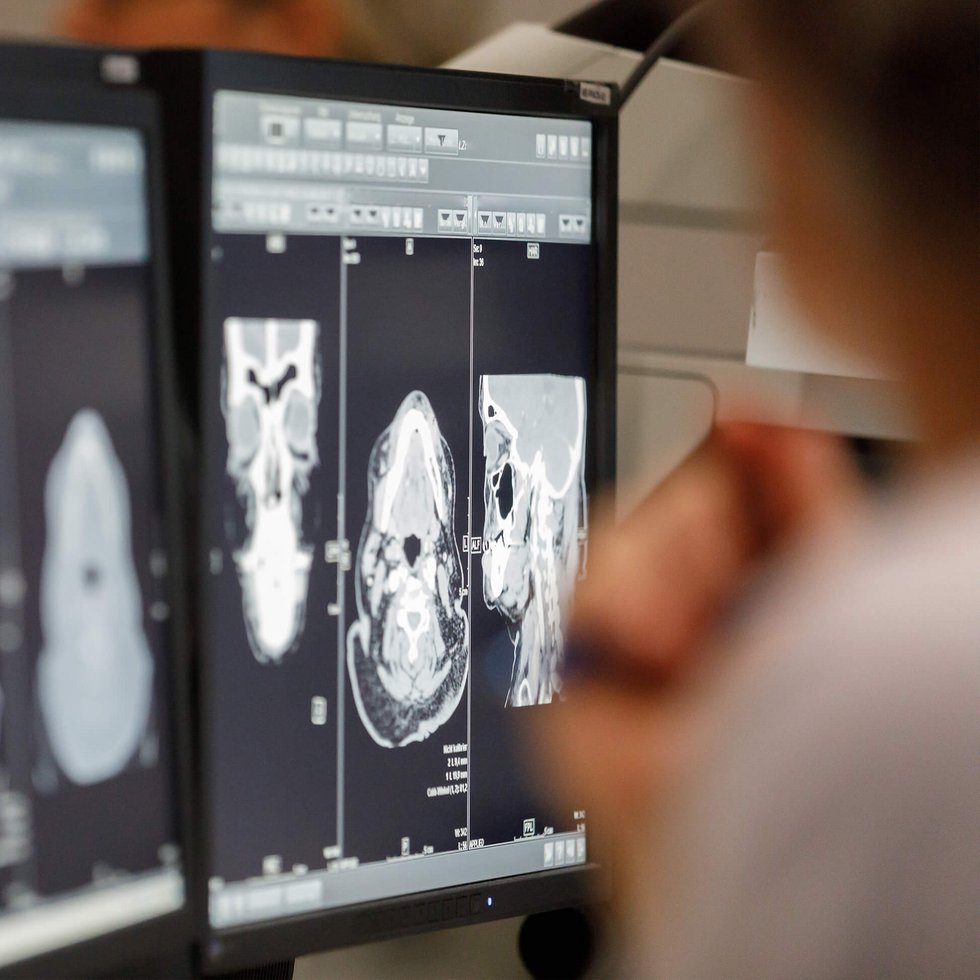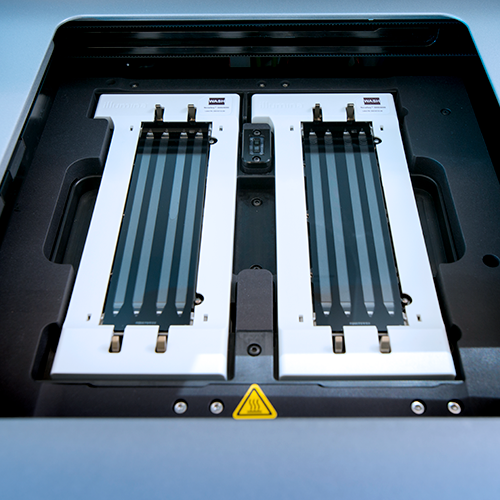Research Structure and Research Strategy at NCT Heidelberg
Priority Areas
Precision medicine has been implemented as the overarching research strategy, including personalized strategies in radiation oncology, surgical oncology, medical oncology, immunology, genomics, proteomics, prevention, and early clinical development.
In line with this strategy, the research structure of the NCT is defined by three main priority areas, namely (1) Precision Local Therapy and Image-Guidance, subdivided into Radiation Oncology and Surgical Oncology, (2) Immunotherapy and (3) Molecular Precision Oncology (Figure 1). In addition to these three main priority areas, Pediatric Oncology, Cancer Prevention, Medical Ethics, Physical Activity and Quality-of-life-related research build research programs across the priority areas (see Figure 1, lower light blue bars). Moreover, patient involvement plays an important role in all phases of research at the NCT Heidelberg.
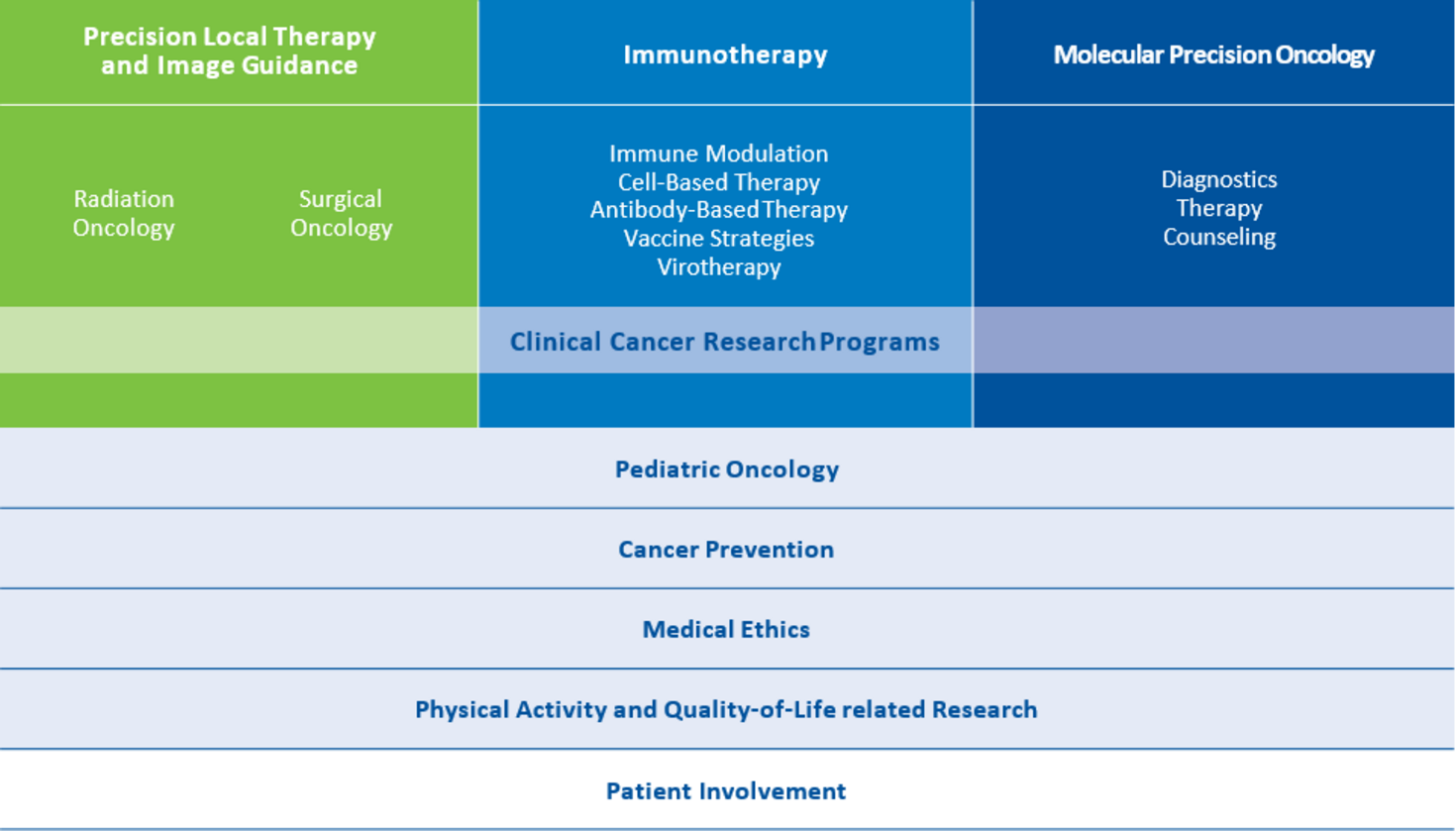
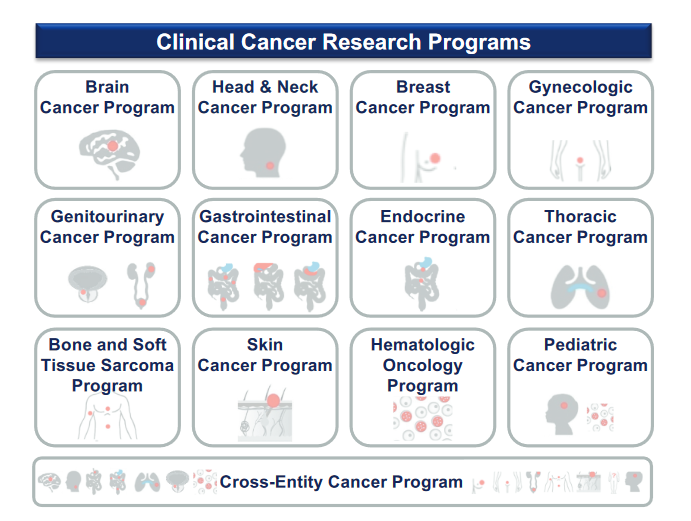
Clinical Cancer Research Programs (CP)
A comprehensive patient-oriented research platform is provided by the Clinical Cancer Research Programs (CPs, see Figure 1, upper gray bar and Figure 2). The CPs are primarily defined by specific groups of tumor types but increasingly incorporate disease mechanism-guided diagnostic and therapeutic approaches and systematically integrate basic, preclinical, translational, and clinical research. These entity- and mechanism-oriented, coordinated research programs ensure the efficient and continuous transfer of interdisciplinary, personalized, and innovative findings from bench to bedside and back.
The three priority areas are closely linked to the CPs, which ideally, are intertwined with each of these main areas. This linked structure is to facilitate both umbrella and basket trials in defined and well-characterized patient cohorts. The matrix formed by the priority areas and the CPs reflects the idea of a true comprehensive cancer center.
Both, priority areas and CPs, are supported by Core Services .
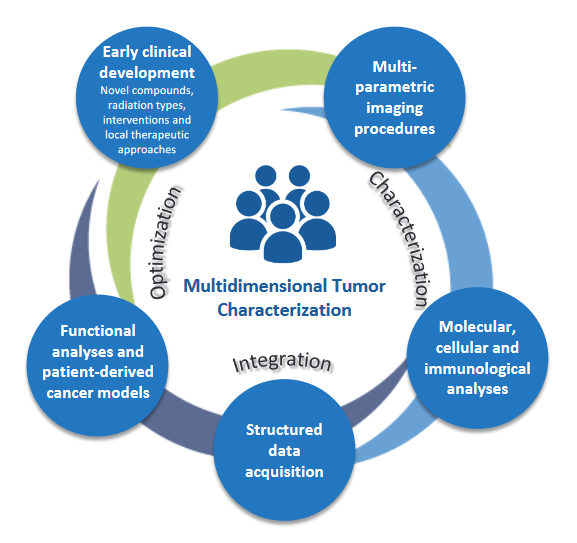
Research Strategy
The overarching research strategy originates from the developments and innovations in the field of oncology over the past few years. Historically, patient care and treatment are based on each tumor entity as a whole, however, a detailed understanding of the underlying biology of each individual tumor is necessary to achieve the central goal of interdisciplinary and individualized patient care. Thus, the classical diagnosis by a combination of histopathology and imaging methods as a basis for therapeutic strategies will be expanded and complemented by a multidimensional tumor characterization approach, as well as integration and clinical evaluation of complex data sets in order to optimize therapeutic strategies. Multidimensional tumor characterization includes extended analyses on a molecular, cellular, immunological, and functional level, alongside further diagnostic procedures such as novel approaches in the field of oncological radiology.
The overarching strategy follows three main principles:
(1) characterization, (2) integration, and (3) optimization. Characterization (1) includes multiparametric imaging procedures alongside molecular, cellular, immunological, and functional analyses. Integration (2) comprises the structured acquisition and integrated analyses of data. Optimization (3) of treatment considers the development of patient-derived cancer models as well as the early clinical development of novel compounds, radiation types, interventions, and therapeutic approaches (figure 3).
NCT Heidelberg Core Services
Interdisciplinary NCT Core Services such as the NCT Trial Center, NCT Tissue and Liquid Banks, NCT Cancer Registry, DataThereHouse (DTH), NCT Immunomonitoring, and Ethics and Patient oriented Care in Oncology (NCT-EPOC) - facilitate translation of personalized oncology.
In addition, DKFZ provides dedicated core facilities, operated by staff scientists, who aid NCT researchers and external collaborators. Service areas include a genomics and proteomics core facility, an animal laboratory core facility, a core facility for microscopy, a flow cytometry core facility, an EMBL/DKFZ core facility for substance screening and chemical modification, and the biostatistics services division.







